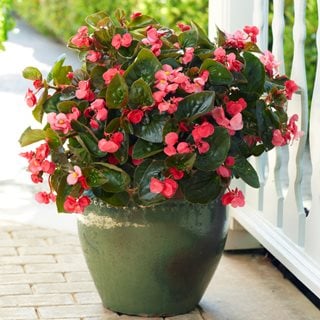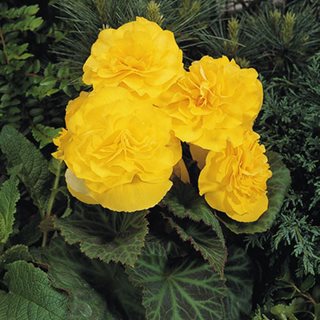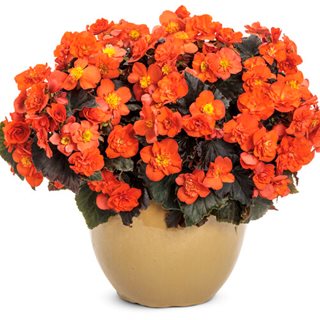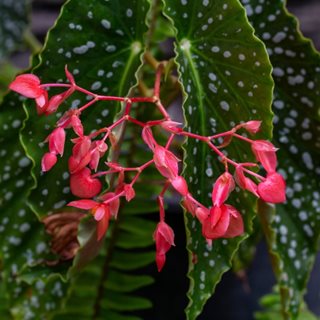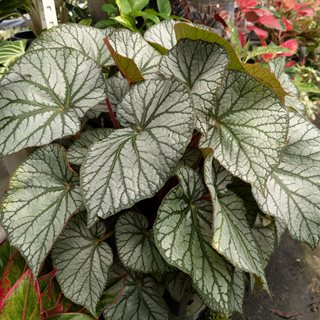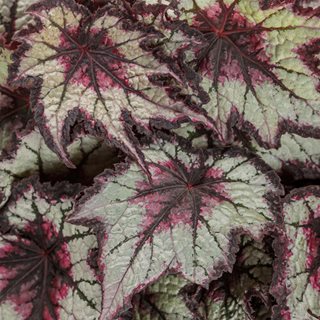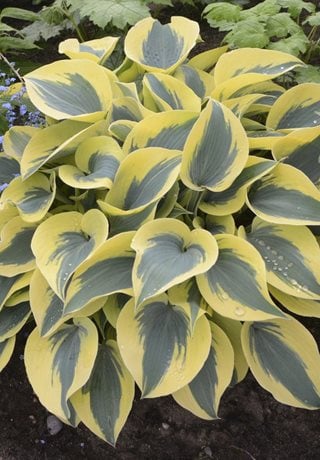7 Types of Begonias for Your Garden or Home
From wax begonias to Rex begonias, discover which type will thrive best in your home or garden.With more than 2,000 species and thousands of cultivars, Begonia spp. is one of the most diverse and captivating plant groups. However, their incredible variety can make it a challenge to choose the perfect one for your indoor or outdoor garden.
Most Begonia can be grouped into seven main categories, each offering distinct growth habits, flower characteristics, and leaf shapes and colors—although many are hybrids and combine traits from multiple groups. To help you sort through your options, here’s a closer look at the most common begonia types and what makes each one unique.
FIBROUS-ROOTED BEGONIAS (SEMPERFLORENS or WAX BEGONIAS)
Also known as Semperflorens or wax begonias, these ever-blooming begonias are prized for their vibrant red, pink, or white flowers and succulent-like foliage. They are characterized by fibrous root systems, meaning they don’t grow from rhizomes or tubers like other begonia types.
Key Features:
- Continuous blooming, flowering almost year-round in mild climates.
- Compact habit, typically growing 6 to 12 inches tall and wide.
- Glossy, rounded leaves come in shades of green, bronze, or reddish-brown, adding visual appeal.
- Easy care, thriving in partial shade to full sun and requiring only moderate watering.
Best uses:
Garden beds and borders, containers, indoor potted plants
“This type of begonia is probably the most grown begonia worldwide. It is tough, low-water tolerant, and does not need a lot of care to bloom all year long.” — American Begonia Society
TUBEROUS BEGONIAS
Grown from round, fleshy tubers, tuberous begonias are easily recognizable by their bold, tropical-looking flowers that span up to 6 inches across. Because these begonias are frost-tender, the tubers are often planted as annuals each year or dug up and stored indoors for the winter.
Key Features:
- Big, showy flowers with single, double or ruffled petals bloom in shades of pink, yellow, orange, red, white, and bicolors.
- Boasts a long bloom period, flowering continuously from late spring until frost.
- Available in both upright and trailing habits, adding to their versatility.
Best uses:
Hanging baskets, window boxes, garden beds and borders
Learn more on how to grow tuberous begonias.
RIEGER BEGONIAS
Rieger begonias (Begonia × hiemalis), also known as Elatior begonias, are hybrids of fibrous-rooted begonias and tuberous begonias and share some of the characteristics of each. They are often called winter-flowering begonias because they bloom during the cooler months, making them a popular choice as indoor plants.
Key Features:
- Densely petaled rose-like flowers bloom in a riot of colors, including bright yellow, white, pink, orange, and red.
- Plants remain compact and bushy, growing to about 12 to 18 inches tall and wide.
- Typically bloom in winter and early spring, with the flowers lasting for several weeks to a few months.
- Can be grown outdoors year-round in mild climates (zones 9-11).
Best uses:
Seasonal houseplants, containers, hanging baskets
CANE BEGONIAS
Cane begonias, which are characterized by erect bamboo-like stems, are grown both for their flowers and striking foliage. Angel wing varieties are particularly showy and feature long, silver-spotted leaves with reddish undersides.
Key Features:
- Available in a wide range of sizes, ranging in height from 1 foot to over 5 feet, depending on the variety and growing conditions.
- Pendulous clusters of pink, red, white, or orange flowers typically bloom from late spring to early fall.
- Large, often asymmetric leaves can be green, silver, pink or purple, and may be variegated or spotted.
Best uses:
As a houseplant or outdoors in partial shade
“Cane begonias have been popular plants for many years due to how easy they are to grow, but also how beautifully free-flowering they are. The silvery spotting on the leaves is always eye-catching, and the purple tones both on the leaf surface and the leaf underside provide other characteristics to love.” — American Begonia Society
RHIZOMATOUS BEGONIAS
This is the largest and most diverse begonia group, grown mainly for its ornamental foliage. These begonias spread via thick, creeping rhizomes and often have unusual, textured leaves. Although they do bloom, they are primarily grown for their foliage rather than their flowers.
Key Features:
- Sizes vary widely, ranging from a few inches to several feet tall, with leaves up to 12 inches wide.
- Diverse and often dramatic leaf shapes can be ruffled, spiraled, star-shaped, rounded or palm-shaped.
- Leaves come in a wide range of colors, including deep green, silver, red, purple, dark brown, and even multi-toned patterns.
Best uses:
As a houseplant, in terrariums, outdoors in shaded garden beds and containers
REX BEGONIAS
A striking subcategory of rhizomatous begonias, Rex begonias (Begonia rex-cultorum) are prized for their breathtaking foliage, which showcases an extraordinary range of bold colors and intricate patterns. Generally more delicate and sensitive to environmental changes than other rhizomatous begonias, they require high humidity and consistent watering to thrive.
Key Features:
- Leaves come in stunning shades of silver, purple, maroon, red, pink, green, or bronze and often have a metallic or iridescent glow.
- Leaf patterns include spiraled (like the popular ‘Escargot’), marbled, heavily veined, speckled, and banded. Some varieties have ruffled or crinkled edges that add to their visual appeal.
- Typically growing 12 to 18 inches tall and wide, they are ideal for indoor settings, adding vibrant beauty to any space.
Best uses:
Houseplant, shaded garden beds and containers
“Rex begonias do produce delicate flowers but are usually grown for their spectacularly colored and intriguingly textured leaves. Other common names for these plants are fancy-leaf, painted-leaf or king begonias.” — UConn Home & Garden Education Center
TRAILING-SCANDENT BEGONIAS
A unique category of begonias known for their vining or cascading growth habit. Their long, trailing stems bear clusters of small, delicate flowers and can either climb upward or elegantly spill over the edges of hanging baskets and containers. These plants typically bloom from late spring into summer, though some newer varieties boast extended blooming periods or even continuous flowering.
Key Features:
- Leaves are typically rounded or heart-shaped, and may display a wide range of colors, including green, bronze, burgundy, or variegated patterns.
- Flowers are small but abundant, blooming in clusters in shades of pink, red, orange, yellow, or white.
- While many trailing begonias fall under the fibrous-rooted category, there are exceptions depending on the variety. For example, some trailing begonias may have rhizomatous roots, which allow them to spread horizontally.
Best uses:
Hanging baskets, trellises, as trailing accents in mixed container plantings
With so many types to choose from, begonias offer endless possibilities for adding color, texture, and beauty to your home or garden. Whether you prefer lush foliage or bold flowers, there’s a begonia for every space and style.
See more on how to grow begonias.
ABOUT THE AUTHOR
Anne Balogh is a longtime gardening writer and editor for Garden Design, with over 20 years of experience covering everything from container planting to landscape trends. She draws inspiration from her own Zone 5 garden in Illinois, where she experiments with hardy perennials and flowering annuals.
